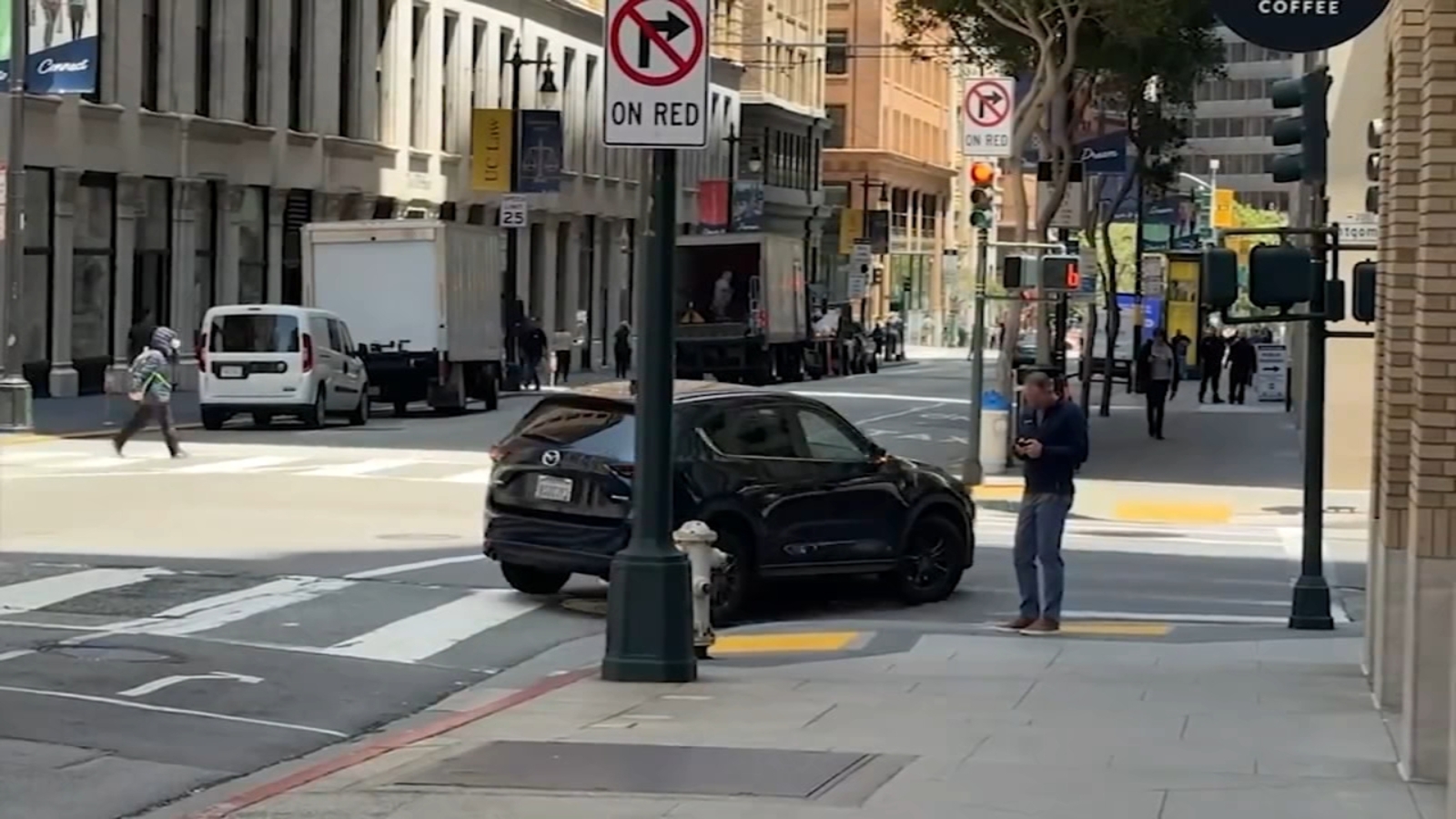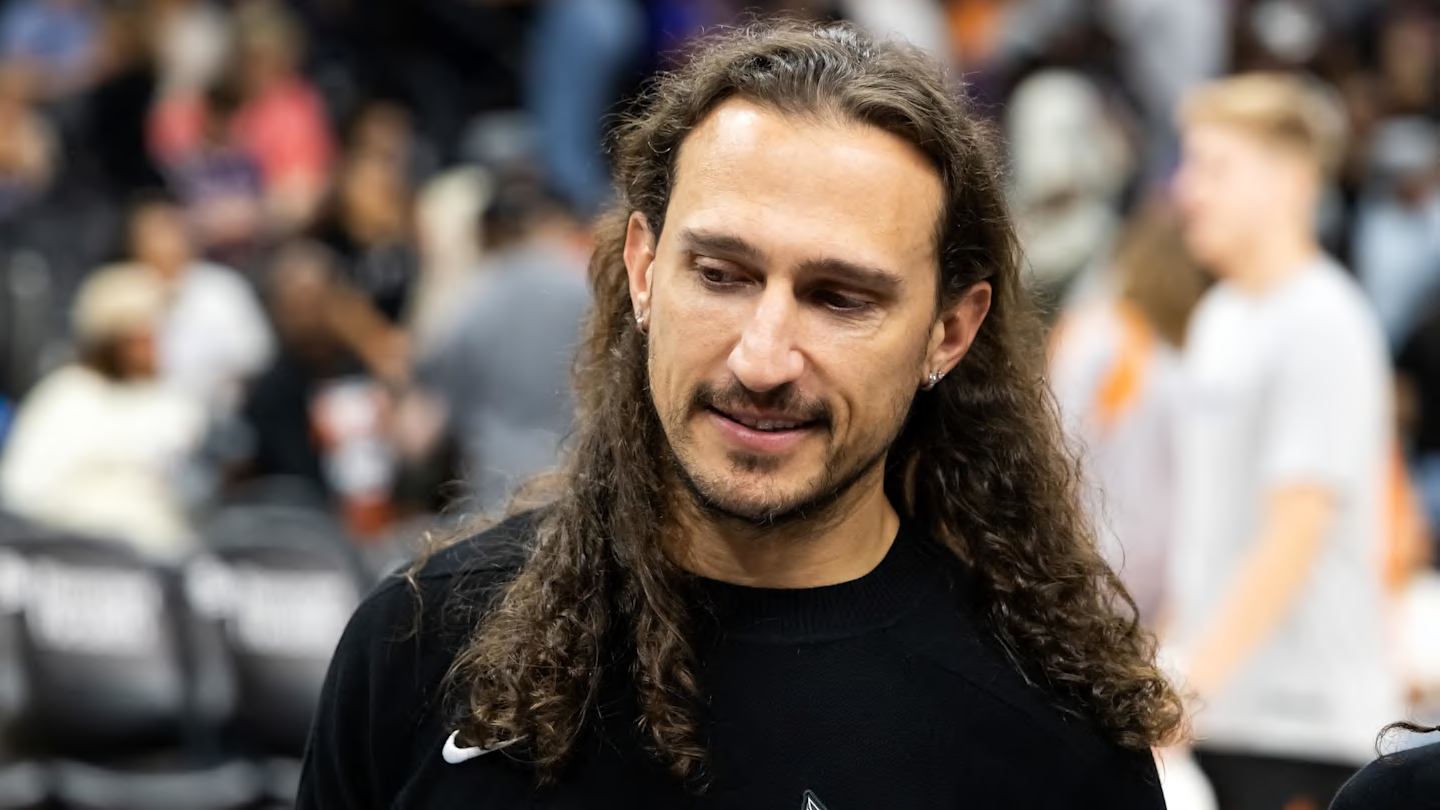Lifestyle
How to exist in many worlds at once, with Yendry
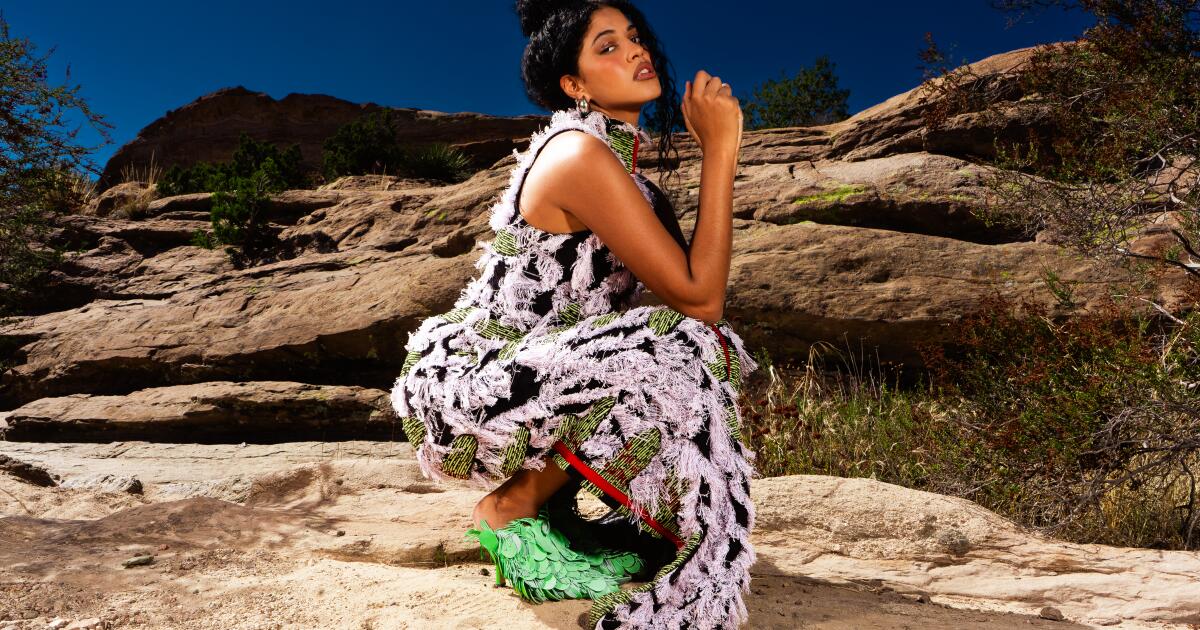
At the tail end of a long studio session in preparation for her first full-length album, the L.A.-based artist known by her monomial Yendry is reminiscing on Zoom. “A lot of things have been happening to me,” she says of her electric rise as a singer and performer over the last few years. “And I always think, Well, I’m just a girl from D.R., from Santo Domingo. I grew up in the countryside in Italy. There weren’t big expectations at all in the way I was raised — in a very humble way, with a crazy work ethic. I didn’t know that these things could happen.”
It’s these dualities of Yendry that connect with a growing fan base all over the world. The artist doesn’t explain who she is, she just shows it in her work — whether it’s releasing an infectious, electronic-tinged bachata track in the same breath as a deeply felt ballad about her late grandfather, or rapping in both English and Spanish on a hip-hop beat. Yendry has experience with letting the rest of the world catch on in their own time.
This has always been her way. The Dominican-born, Italian-raised artist exists in many worlds at once. She speaks (and sings in) three different languages. Her musical inspirations span the sounds of her homeland, 2000s-era Timbaland productions or Massive Attack. There is something about Yendry, who prefers to be barefoot when she performs, that makes the rest of the world lean into her. On recordings or when onstage — she just wrapped up a tour in Europe — she’s entrancing. Her music feels self-actualized in its range — bold and free-spirited. It’s no wonder she’s a Leo sun.
Her upcoming album — due out next year — is a traveler’s journey from her roots to where she is now: an acceptance and integration of all of her cultures, eras and versions along the way. In Yendry’s world, no parts of herself are shunned. “There’s a resolution of, ‘You know what? I’m both,’” she says of the theme of the album. “This is what came out it, now that I’m comfortable with all of my cultures. I would say it’s a brave project, but at the same time I couldn’t do this if I didn’t want to [take a] risk.”
Yendry: When I started singing jazz, that was when I actually fell in love with performing. The way people reacted to my voice, or I would feel it so much that I will cry sometimes onstage. It’s something that comes natural.
Julissa James: Almost like a portal.
Yendry: I always say that I didn’t choose this. It kind of came to me.
JJ: Do you have memories of the first time — I don’t know if you were a child — where you had a feeling of: “OK, maybe I should try to do this.”
Yendry: As a baby, I was so out of tune [laughs]. I would dance all the time. I grew up with MTV, of course, I would watch Mariah Carey, Whitney Houston and Destiny’s Child, these people. But it’s during your teenage era you start discovering your voice. You start growing up and asking yourself these deep questions: What is music? Why do you feel this way?
It’s the dualities of Yendry that connect with a growing fan base all over the world.
(Bishop Elegino / For The Times)
JJ: I’m so curious what you were like as a teenager. You had so many of the same musical influences I had. Whether it was Aphex Twin, Massive Attack, Radiohead …
Yendry: I grew up in Turin, which is in the north of Italy — it’s a very industrial city. There’s a lot of electronic music, there’s an underground scene. We have one of the best electronic festivals here in Europe, so that was amazing. But before, I was really [into] 2000s pop. I was obsessed with Timbaland productions. Nelly Furtado. Gwen Stefani. Sean Paul. I actually learned English by translating lyrics. I would go to AZLyrics with the dictionary in Italian. “Good Girl Gone Bad” by Rihanna? I translated the whole thing. I was really into pop music. And then at some point, it switched. I started to listen to indie music. Daughters, the XX. Then I discovered James Blake and Frank Ocean and Massive Attack. My taste went into something different. It has been a journey. That’s what I love about music: I will never stop learning.
JJ: Curiosity is so important in general, but especially when it comes to music. I want to talk to you about why you decided to study philosophy in university. What kind of answers were you seeking at the time, and to what questions?
Yendry: I realized that philosophy would allow me to be curious about anything I could. I found out that I could apply it to our ordinary life and it would give me a different perspective on everything. I always can see both sides. I’m always like, “Oh, what if?” It helped me a lot to open up my mind.
JJ: In your personal life and in your professional life, you kind of have found a way to exist between genres. Was it a conscious decision?
Yendry: It came in a very natural way. Because I’m curious, I had the same approach in the studio, which is: “Oh, let’s try.” I always say, “Guys, we’re making music. We’re not doctors. We don’t have books. We can lead the way.” I could just sample my cough and make a beat. I can’t see limits. My strength since the start is that I don’t have limits in the studio. I just make things I’m literally happy about. And then once it’s there and I listen to the song on a loop, I want to share it. And that should be the process. That reflects my life. I’ve never been just Dominican. Never been just Italian. I speak three languages. I have families in three different places — my dad lives in New York. It has been chaos since I was born. It’s very hard for me to be like, “Hey, I’m just going to make bachata.” No, bro. I’m going to make bachata whenever I feel like, but I’m also gonna have a hip-hop song.

Yendry wears Bottega Veneta shoes, dress, bag and earrings.
(Bishop Elegino / For The Times)
JJ: I’m curious how you got to that point where you are very comfortable being like, “Yo, I am like 15 different things and it’s all good.”
Yendry: It’s been hard, obviously, because at the start, people are just so confused. Even if you’re sure about what you are, they are confused about who you are. But I also don’t feel like I need to be validated. … I’m an artist. I’m also Latin, which I’m proud of. And I’m also Italian. But I’m an artist. I’m proud to be a Latin artist. I just don’t want that to be a limit. There was a point where people were associating Latin music with just reggaeton. But we have cumbia. We have bachata. We have boleros. We have meringue. We have mambo. Why would we just stick to one thing?
JJ: I’m so curious how language plays into how you think about music because you have a song like “You” with Damian Marley, in which you’re singing in English. And then you have a song like “Herrera,” you’re singing and rapping in Spanish, and then you have a song like “El Diablo” where you’re singing and rapping in English and Spanish.
Yendry: Some songs, they were just born in a certain language. If I tried to translate, it wouldn’t be the same song. It’s about the moment. I was there in the studio at 5 a.m., jamming with Damian Marley, and he’s jamming in English. So it’s natural for me to jam in English. If I’m making bachata and I’m getting myself into that mode, then it’s very easy for me to start it in Spanish. And sometimes it’s both languages — like that melody comes out in Spanish and that other melody comes out in English. Which is going to be a nightmare for people that have to market the music. But that’s their job, no? [Laughs.]
JJ: In so many of your big songs, whether it’s “Nena” or “Ya,” there does feel a really deep connection to the [Dominican] side of you. “Ya” was on Barack Obama’s playlist one year.
Yendry: I didn’t expect “Nena” to get that much love, especially from Dominican people. I thought they were going to be like, “She lives in Italy, why does she want to be Dominican?” You never know. [But] I also feel like if you do things in a very honest way, and if you’re not pretending or faking it, it’s gonna be fine. But it is validating, of course, when you’re on Obama’s list. We still have jokes about it: Sometimes I’m like, “Let me call my friend Barack.”
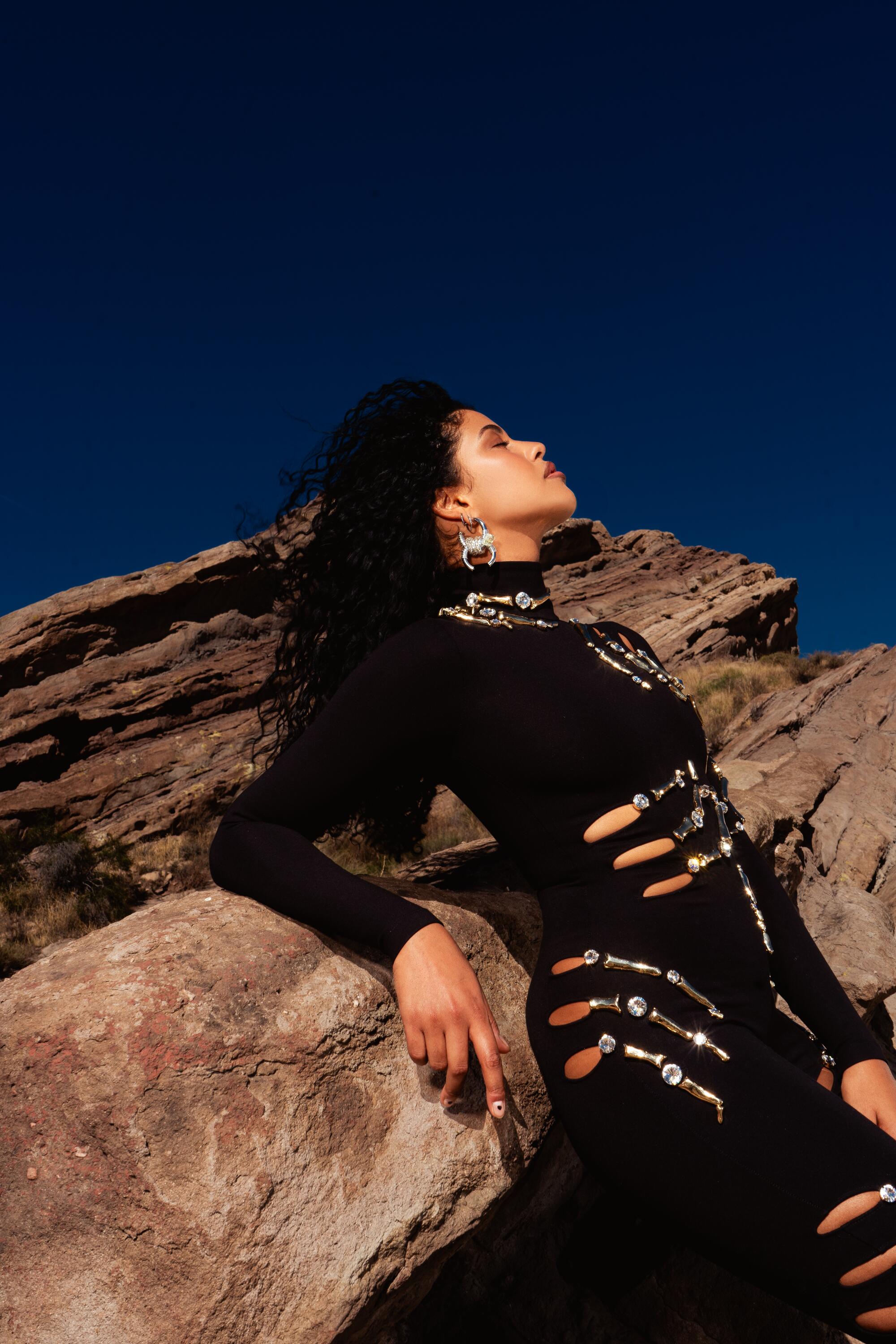
In Yendry’s world, no parts of herself are shunned.
(Bishop Elegino / For The Times)

Yendry wears an Area bodysuit, Lorena Saravia boots, Jéblanc earrings.
(Bishop Elegino / For The Times)
JJ: In your Colors and NPR Tiny Desk performances, I noticed you were barefoot. It felt very grounded.
Yendry: I love being barefoot all the time. If I was not living in a city and I didn’t need to use shoes, I would be barefoot all the time. I do feel like it keeps me connected to the ground. And I feel like it gives me more support for singing. Even for this tour, I have an amazing friend that’s finding a lot of cool clothes for me and I’m like, I don’t want to use shoes.
JJ: Tell me more about your philosophy around performing. You mentioned that you want it to feel honest. You want it to feel sensual. You want it to feel connected. When you go up there on stage, do you enter one of those states where you’re just in flow?
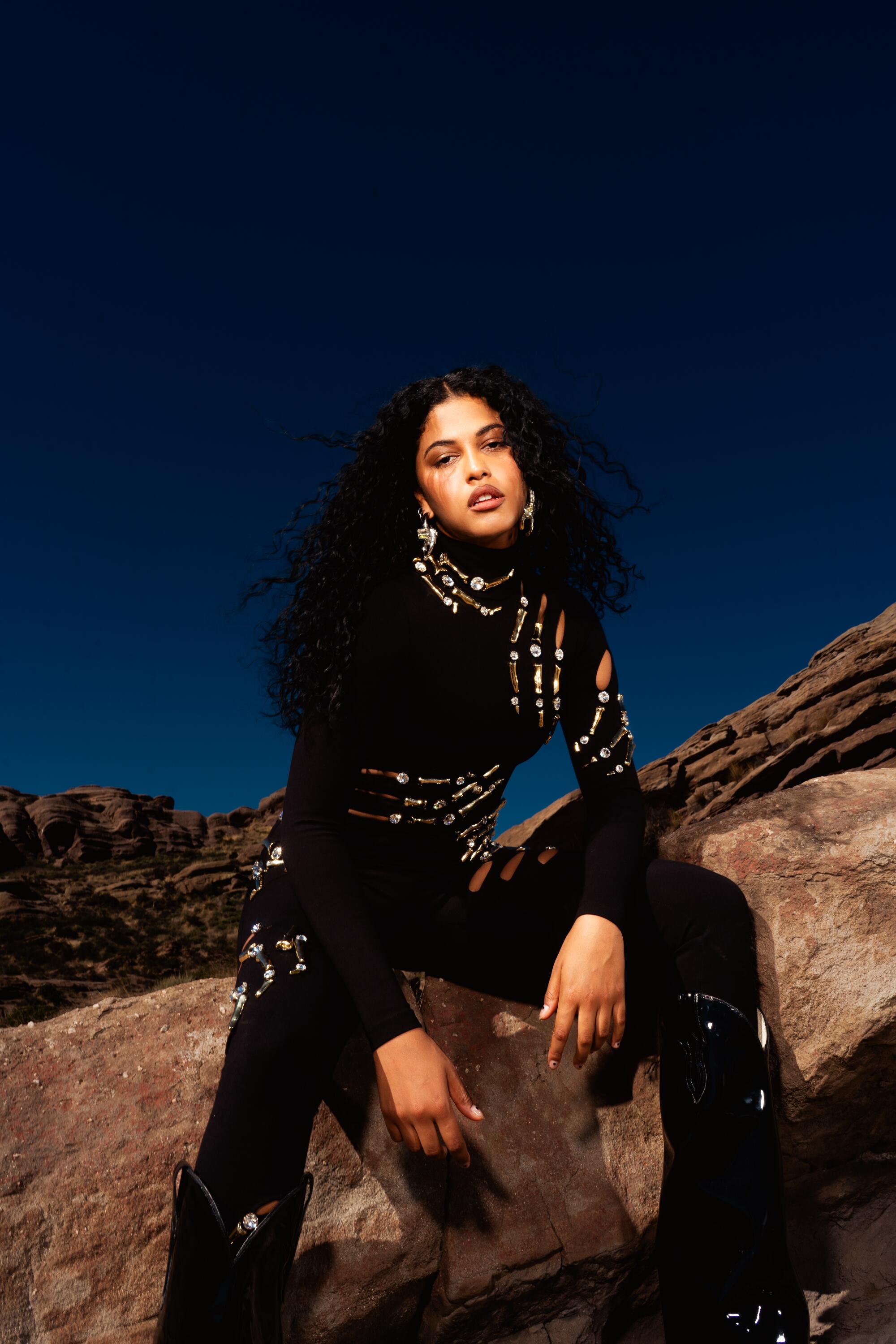
“Once I start singing the first song, I’m in another world,” Yendry says abut performing.
(Bishop Elegino / For The Times)
Yendry: Once I start singing the first song, I’m in another world. You do not have an idea of what happened once you get off stage. It’s a trance. I’m so focused on singing and the way I want to project my voice and the way I want to interpret my songs that I don’t even think too much about the movements that I want to make. It’s not very thought out.
JJ: You’re performing in L.A., which is your new home. How has it been?
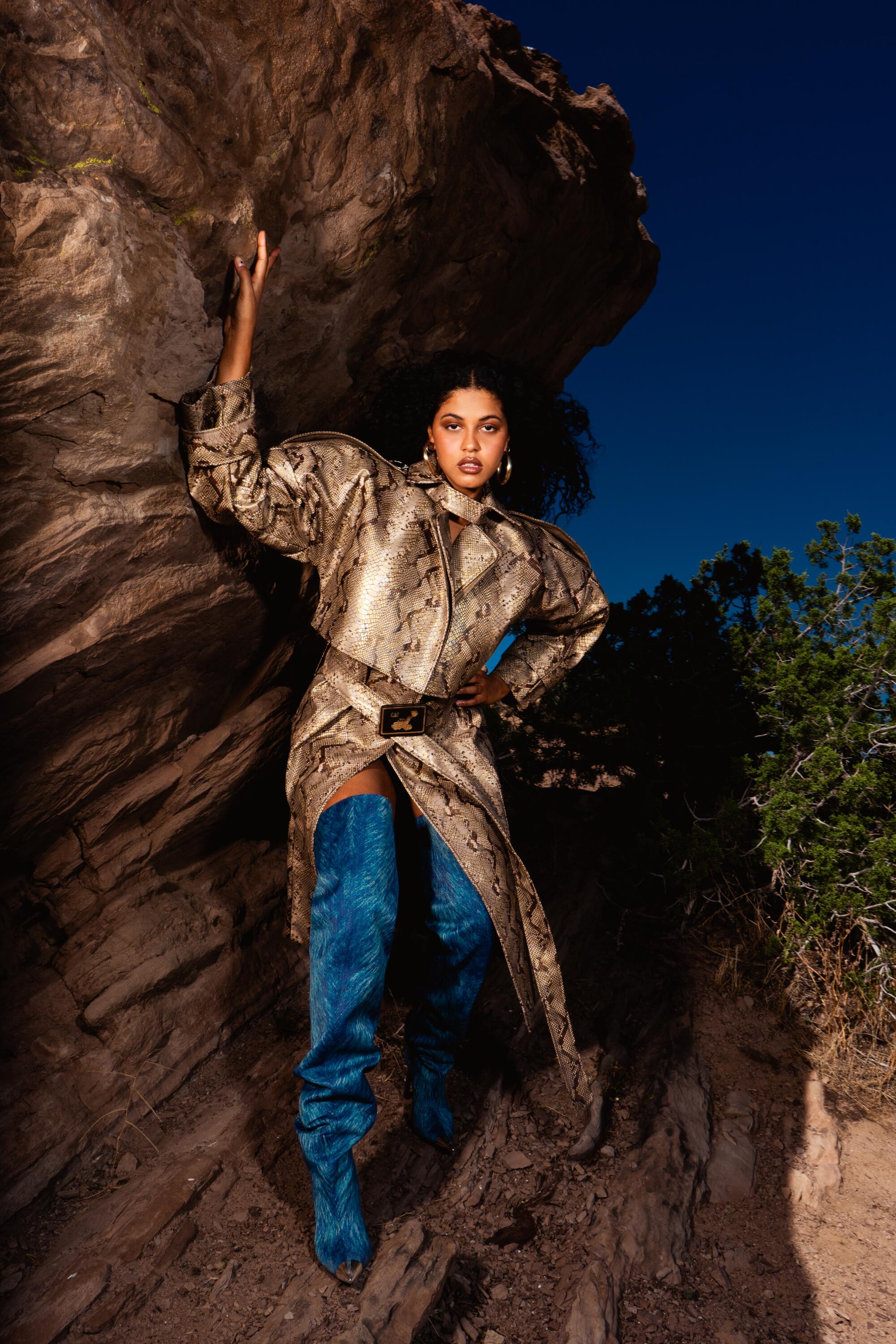
Yendry wears a Tanamachi jacket and Area boots.
(Bishop Elegino / For The Times)
Yendry: The city gives me that thing that I never had in Turin: being able to go to shows every night. I’m just finding this crazy scene. I love it. But at the same time it’s a very peaceful place. I also fell in love with this man, which is amazing. We moved here together. We’ve been dating for a while now and and I have all the freedom that I love. It’s good to have a healthy relationship.
JJ: So it’s a new chapter for you. And you’re preparing to release your first full album. How are you feeling about it?
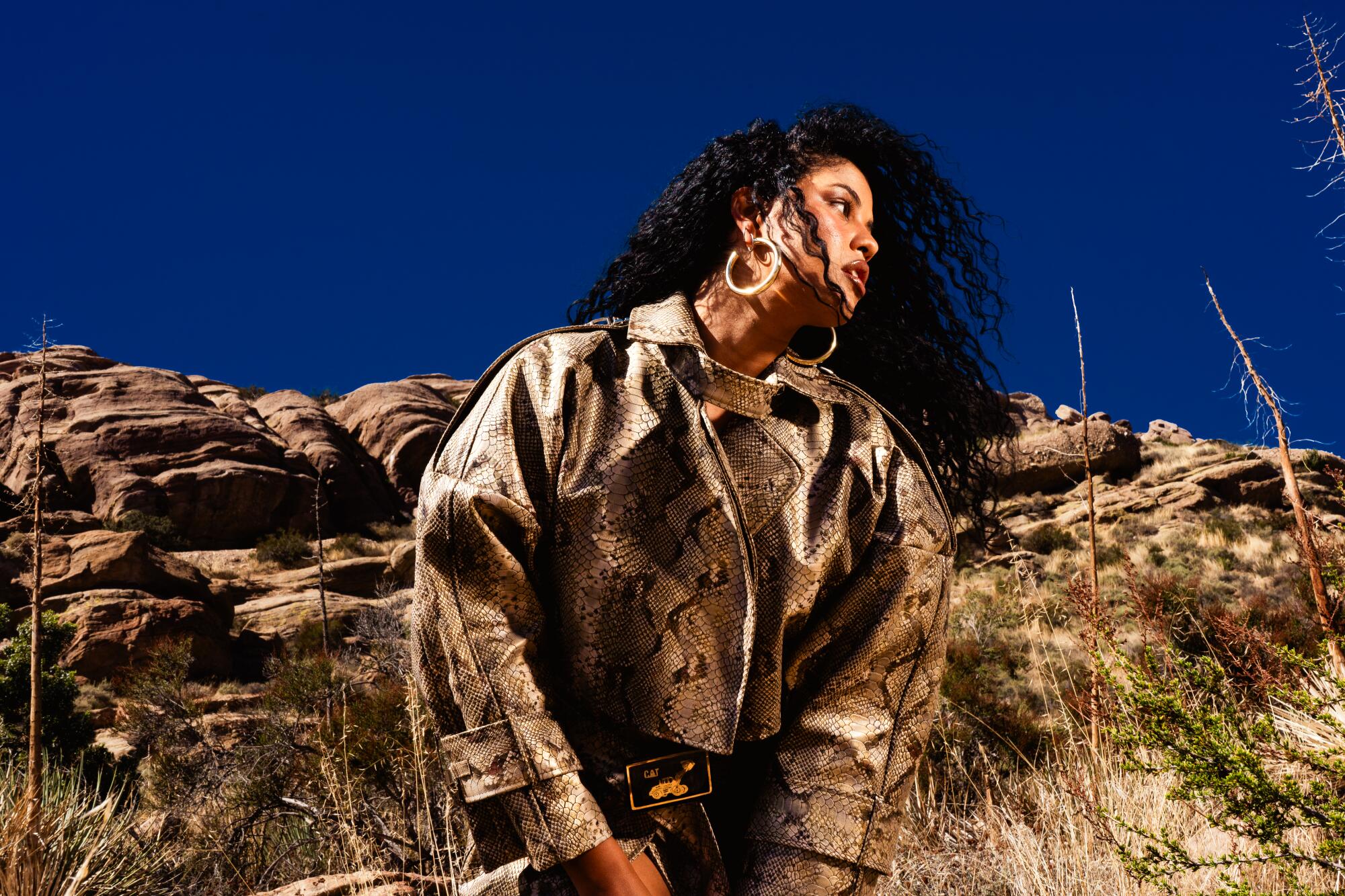
Yendry’s upcoming album is a traveler’s journey from her roots to where she is now.
(Bishop Elegino / For The Times)
Yendry: I didn’t experience the whole album thing in a very positive way at first because it’s my first one. So you put that pressure on yourself when you take it that seriously. But at the same time, I feel like this moment of my life where things are aligning.
JJ: The two singles you’ve released so far that are connected with the album are “Herrera” which is your version of a bachata that has this electronic overtone to it. And “La Puerta,” which is about losing your grandfather. I hear that song almost as being about portals, a ballad that is so rooted in sentimentality. You’re already presenting us with two wildly different emotions, energies. I would love for you to talk to me about where the rest of this album is taking us as the listener?
Yendry: I have these two sides. I think my whole life has been an analogy of this. Yendry in D.R. is very different from Yendry in Italy. In D.R., I’m more tough because I have to be. Soy mas de calle — more street. While in Italy, I can see myself as more intellectual. I go to museums. I would say that my album really reflects those two different sides. There’s some dembow-ish kind of rapping, a person that wants to feel sexy and feels good about it. And on the other side, there is also this melancholic girl that’s very open about her feelings and super melodic. I’m still trying to find the balance between those two different worlds.
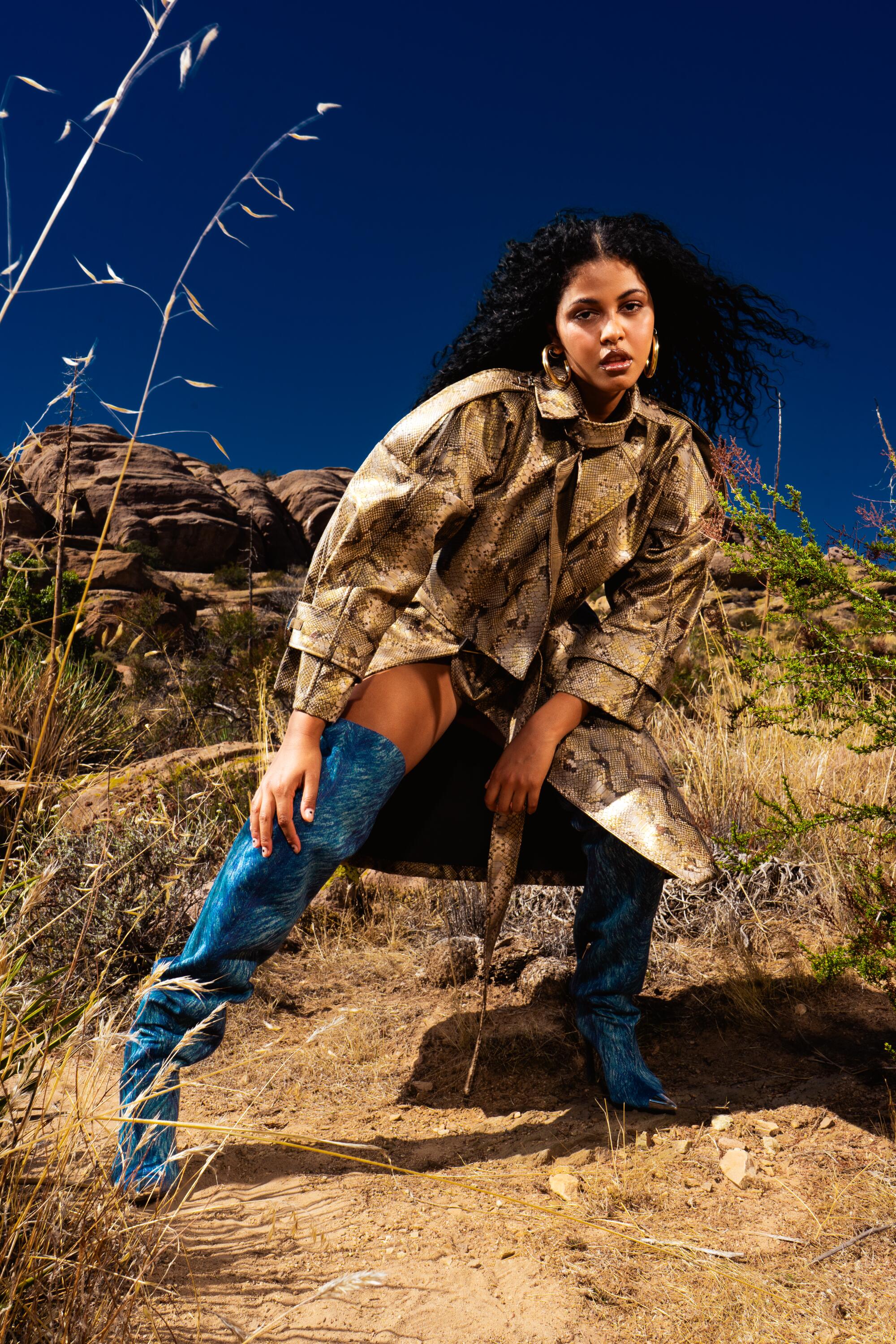
The Dominican-born, Italian-raised artist Yendry exists in many worlds at once.
(Bishop Elegino / For The Times)
Model Yendry
Makeup Matthew Fishman
Hair Adrian Arredondo
Photo assistant Andrew Nunez
Styling Assistant Claire Casto
Location Vasquez Rocks Natural Area and Nature Center

Lifestyle
Sunday Puzzle: Matching pair of letters

On-air challenge
Every answer today is the name of a famous person or thing in which the last two letters of the first half are the same as the first two letters of the second.
Ex. Star of TV’s “Murder, She Wrote” — Angela Lansbury
1. Composer of “Rhapsody in Blue” and “An American in Paris”
2. Spanish opera singer who was one of the Three Tenors
3. Singer nicknamed “Mr. Las Vegas” on account of his long residency there
4. Nickname for Delaware on account of its order in ratifying the Constitution
5. Baseball program for kids
6. Old ___ (large canine breed)
7. Symbol for our neighbor to the north
8. July 1 — when our neighbor to the north celebrates its independence
9. French composer of “Nocturnes” and “Prelude to the Afternoon of a Faun”
10. New York locale where many immigrants arrived in the 19th century
Last week’s challenge
Take a child’s game, in eight letters. Change the sixth letter to ‘ch’ and, phonetically, you’ll have a popular animated children’s character. What are the game and the character?
Challenge answer
Peek-a-boo, Pikachu
Winner
Travis DiNicola of Harrisburg, Pennsylvania.
This week’s challenge
This week’s challenge comes from listener Bob Weisz. Take the name of a major film director. Drop the last six letters of his name, and rearrange what remains. You’ll get the name of a major film award — for which this director has been nominated six times. Who is he and what is the award?
If you know the answer to the challenge, submit it below by Thursday, June 26 at 3 p.m. ET. Listeners whose answers are selected win a chance to play the on-air puzzle.
Lifestyle
Iran Threatens Retaliation After U.S. Airstrikes Hit Nuclear Facilities

Iran’s Foreign Minister
We will retaliate!!!
Following U.S. Airstrikes
Published
Iran is vowing a forceful response after the United States airstrikes targeted three of its nuclear sites over the weekend — an operation ordered by President Donald Trump that has triggered swift backlash from Tehran.

Late Saturday, Iranian Foreign Minister Abbas Araghchi issued a stark warning, condemning the strikes as a flagrant breach of international norms and threatening the repercussions would be long-lasting.
“The United States, a permanent member of the United Nations Security Council, has committed a grave violation of the UN Charter, international law and the NPT by attacking Iran’s peaceful nuclear installations,” Araghchi wrote on X.

The White House
He went on to call the attack “outrageous,” accusing the U.S. of endangering global security and setting a dangerous precedent.
“These actions will have everlasting consequences,” he said. “Every UN member state should be alarmed by this reckless, unlawful behavior.”

Araghchi also made clear that Iran is prepared to act, citing the UN Charter’s self-defense provisions and asserting the country reserves all options to protect its people and sovereignty.
Lifestyle
Star Bassist Carol Kaye rejects Rock & Roll Hall of Fame honor

Bassist Carol Kaye plays an Epiphone hollowbody electric guitar in April 1966 in Los Angeles, California.
Jasper Dailey/Michael Ochs Archives/Getty Images
hide caption
toggle caption
Jasper Dailey/Michael Ochs Archives/Getty Images
Carol Kaye, one of the most prolific bassists in rock and pop history, said she does not want to be inducted into the Rock & Roll Hall of Fame.
The in-demand musician, who collaborated with Barbra Streisand, Stevie Wonder, The Beach Boys and The Supremes among many other hitmakers starting in the 1960s, was listed as a 2025 Hall of Fame inductee in April alongside the late record producer Thom Bell and the late pianist Nicky Hopkins in the Musical Excellence category. The category honors artists whose “originality and influence have had a dramatic impact on music.”
Kaye, 90, announced her decision to turn her back on one of rock music’s most famous accolades on Facebook earlier this week, according to Bass Magazine and other outlets.
The magazine described the news of Kaye’s induction as “as a triumph to her fans and to bassists everywhere.” (Very few women bassists have been inducted into the Rock & Roll Hall of Fame. Others include Tina Weymouth of Talking Heads and The Go-Go’s Kathy Valentine.)
Kaye’s Facebook post was taken down on Thursday, but Bass Magazine and other outlets shared its contents: “It wasn’t something that reflects the work that Studio Musicians do and did in the golden era of the 1960s Recording Hits…….. you are always part of a TEAM, not a solo artist at all,” Kaye reportedly wrote on Facebook. “I refuse to be part of a process that is something else rather than what I believe in, for others’ benefit and not reflecting on the truth — we all enjoyed working with EACH OTHER……..Thank-You for understanding.”
Another likely issue is Kaye’s aversion to the name “Wrecking Crew.” Coined by drummer Hal Blaine, it was given to a group of in-demand session musicians in the 1960s and 70s which included, among others, Blaine, Dr. John, Glen Campbell, and Kaye. Kaye has publicly refuted the name in the past, including in her now-deleted Facebook post: “I was never a ‘wrecker’ at all….that’s a terrible insulting name.”
The Rock & Roll Hall of Fame does not reference The Wrecking Crew in connection with Kaye in its current online content about the artist. But an old version of the artist’s biography on the Rock & Roll Hall of Fame website does explicitly connect Kaye to this group: “A first-call member of the elite stable of Los Angeles session musicians known as the Wrecking Crew, Kaye played on an estimated 10,000 recordings, making her one of the most recorded bassists in history,” the biography states.
Neither the Rock & Roll Hall of Fame nor Kaye immediately responded to NPR’s requests for comment.
In a Facebook post on Thursday, musician Benny Goodman, who goes by the moniker The Neurotic Guitarist and has close to 45,000 subscribers on YouTube, said the Rock & Roll Hall of Fame, “kept saying she [Kaye] was from The Wrecking Crew over and over.” Goodman, who described Kaye as being like “a grandma” to him, added: “That name holds trauma for her.”
Kaye isn’t the first potential inductee to push back against the accolade. Dolly Parton initially rejected her induction in 2022. The county music star posted a statement on social media saying she was grateful for the nomination, but didn’t think she had necessarily “earned that right.” Despite her qualms, the artist ultimately acquiesced and went ahead with the induction.
The 2025 Rock & Roll Hall of Fame induction ceremony will take place on Nov. 8 at the Peacock Theater in Los Angeles.
-

 Arizona4 days ago
Arizona4 days agoSuspect in Arizona Rangers' death killed by Missouri troopers
-

 Education1 week ago
Education1 week agoOpinion | Artificial intelligence, Trump and the Future: 13 Gen Z-ers Discuss
-

 Technology1 week ago
Technology1 week agoGoogle is shutting down Android Instant Apps over ‘low’ usage
-

 Culture1 week ago
Culture1 week agoSlow and Steady, Kay Ryan’s “Turtle” Poem Will Win Your Heart
-

 News1 week ago
News1 week agoAt Least 4 Dead and 4 Missing in West Virginia Flash Flooding
-

 Movie Reviews1 week ago
Movie Reviews1 week agoTitan: The OceanGate Disaster Movie Review: A sobering deep dive into ambition, negligence, and tragedy
-

 News1 week ago
News1 week ago‘No Kings’ demonstrators to gather across Greater Cincinnati in opposition to Trump
-

 News1 week ago
News1 week agoHow Many Law Enforcement Agencies Are Involved in LA Immigration Protests?



